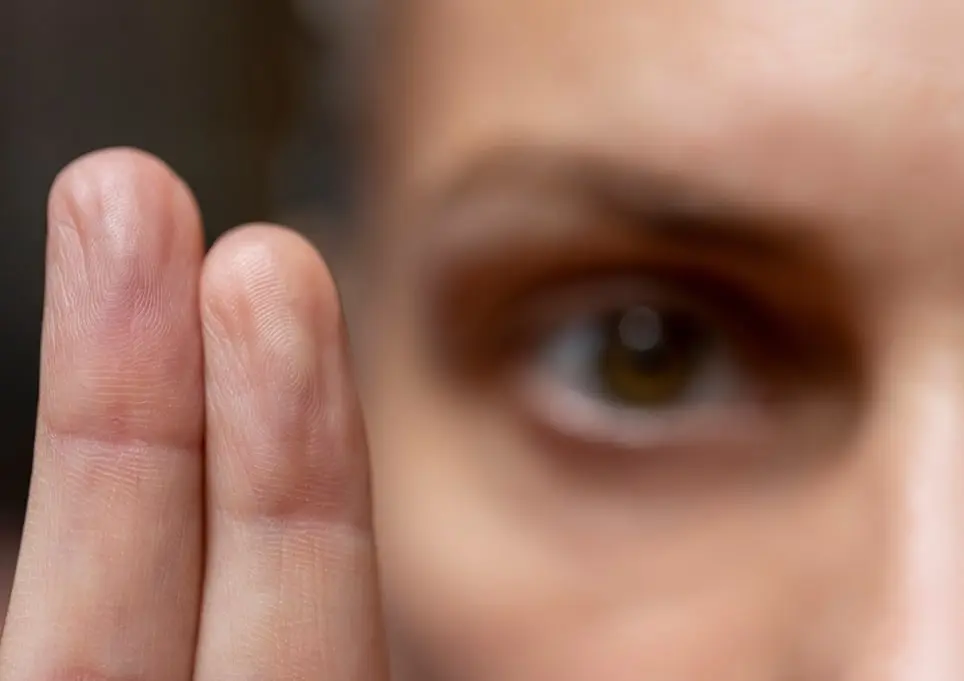Did you know that anxiety disorders are the most prevalent mental health disorders affecting adults in the United States? It’s a staggering number – roughly 40 million people are affected each year. While there are many treatments available to help manage anxiety, it’s a fact that not all of them are effective. However, there’s a glimmer of hope in the form of a therapy called Eye Movement Desensitization and Reprocessing (EMDR) that has shown promising results in treating anxiety disorders. EMDR is a type of psychotherapy that uses rapid eye movements to help people process distressing memories and improve emotional regulation. It has been shown to help people suffering from PTSD, depression, anxiety, and other conditions. If you’re struggling with anxiety, EMDR may be the answer you’ve been looking for.
How Anxiety Can Impact Your Daily Life: Understanding the Effects
Have you ever felt a persistent sense of unease, worry, or fear that just wouldn’t let up? It’s a common experience for many people who live with anxiety, a mental health condition that’s often misunderstood. Anxiety can show up in many different forms – maybe you’ve experienced physical symptoms like a racing heart or shortness of breath, emotional symptoms like persistent worry or dread, or cognitive symptoms like difficulty concentrating or racing thoughts. It’s perfectly normal to feel a little anxious when you’re under stress – that’s just your body’s natural response. But when anxiety becomes chronic, it can become a real obstacle to living your best life. It can get in the way of your daily routine and make it hard to function at your best.
It’s no secret that life can move pretty quickly these days. Unfortunately, that pace has led to an increase in anxiety for people of all ages and backgrounds. And when anxiety strikes, the effects can be far-reaching and complex. Here are just a few examples:
- Disruption of Sleep Patterns
- Impairment in Concentration and Decision-Making
- Physical Health Issues
- Strained Relationships
- Limited Social Engagement
- Diminished Overall Quality of Life
What Is EMDR Therapy, and How Does It Work?
EMDR therapy is a new approach that has been gaining popularity among mental health professionals worldwide, ever since it was developed in the late 1980s by Dr. Francine Shapiro. This breakthrough therapy has proven to be a game-changer for treating anxiety and trauma.
What sets EMDR apart from conventional talk therapy is its unique ability to reprocess distressing memories that fuel anxiety. By utilizing bilateral stimulation through eye movements, sounds, or tactile sensations, EMDR can help you tap into your brain’s natural healing abilities.
In an EMDR session, your therapist will guide you in recalling troubling memories while engaging in this bilateral stimulation. This process helps you reframe and diminish the impact of these memories, as your therapist works with you to navigate the emotions, thoughts, and physical sensations tied to them.
The goal of EMDR therapy is to blend these distressing experiences with more positive beliefs and emotions, thus easing their emotional grip. This, in turn, helps reduce anxiety and empowers you to develop healthier coping strategies and a more positive outlook.
Benefits of EMDR for Anxiety Relief
Are you or someone you know struggling with anxiety? If so, you might be interested in EMDR therapy – a ray of hope for those looking for innovative and effective ways to manage their anxiety.
Unlike traditional therapy methods, EMDR digs deeper into the underlying causes of anxiety, offering profound and lasting relief. But how exactly does it work? Let’s take a closer look at the benefits of EMDR therapy for those grappling with anxiety.
EMDR therapy uniquely targets the root cause of anxiety – traumatic or distressing memories. It’s not just about managing symptoms; it’s about getting to the heart of what’s causing them. This process involves reprocessing these memories. Essentially, it helps the brain to store these experiences in a way that’s less traumatic, reducing their power to trigger anxiety.
Unlike traditional therapies that only alleviate symptoms, EMDR fosters a profound shift in self-perception. Through this therapy, deep-rooted negative beliefs and perceptions are transformed into positive ones, giving people a new sense of empowerment and confidence. And as a result, their anxiety levels are directly impacted, leading to a more fulfilling life.
One of the most appealing aspects of EMDR therapy is its efficiency. Many clients report significant improvements in their anxiety symptoms within just a few sessions.
The therapy is structured yet flexible, catering to individual needs. It is a practical choice for those seeking quick, effective relief.
The EMDR Process: What to Expect During a Therapy Session
Curious about what to expect during an EMDR therapy session? Here’s a closer look at the process:
First and foremost, EMDR therapy takes a structured and systematic approach to addressing your anxiety. In an EMDR therapy session, your therapist will help you to pinpoint a particular memory or event that triggers your anxiety. This may involve recalling distressing emotions, physical sensations, and negative beliefs associated with the event.
Once the memory that triggers your anxiety is identified, your therapist will lead you through a series of bilateral stimulation techniques. This can involve eye movements, tapping, or auditory stimulation, where you will be asked to focus on the distressing memory while simultaneously tracking the therapist’s movements or listening to specific sounds.
The bilateral stimulations used in EMDR therapy activate both sides of your brain and mimic the natural processing that takes place during REM sleep. This, in turn, helps to unlock the trapped emotions and facilitates the reprocessing of the memory.
As the session progresses, you may experience a range of sensations and emotions. It is common to feel a sense of relief, as well as a release of pent-up emotions. Your therapist provides a safe and supportive environment for you to express and process these emotions.
Throughout the session, your therapist will periodically check in with you to ensure your comfort and monitor your progress. They may also guide you through different phases of the EMDR protocol, such as installing positive beliefs or future templates, to further reinforce the desired changes in your perception and response to anxiety triggers.
It is important to understand that EMDR therapy isn’t a one-size-fits-all solution, and the number of sessions required varies from person to person depending on their unique circumstances and the complexity of their anxiety. However, many people report significant relief from anxiety symptoms after a few sessions of EMDR therapy.
Discover the Power of EMDR for Anxiety at The Beverly Hills Therapy Group
EMDR therapy opens doors to a life less burdened by anxiety’s shadows. At The Beverly Hills Therapy Group, your journey to mental well-being is recognized as deeply personal and often challenging. As experienced anxiety therapists in Los Angeles, we’re committed to supporting you with compassionate, expert care tailored to your unique needs. If you’re in the Los Angeles area and seeking relief from anxiety and are curious about how EMDR can assist you, we warmly invite you to reach out to us. Begin your journey of healing and rediscovery with our team of dedicated professionals. By taking this crucial first step, you’ll be on your way to reclaiming your peace of mind and joy in life.





